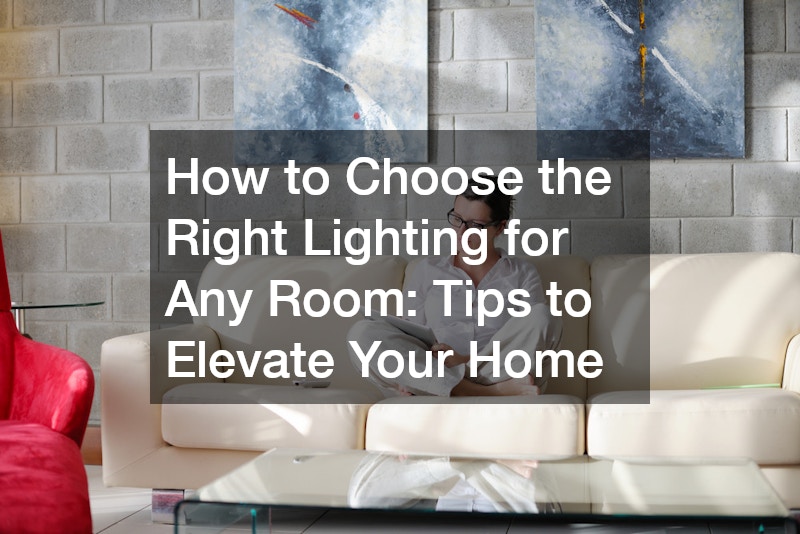Lighting is more than just a functional element of interior design; it has the power to transform a space, set the mood, and enhance the appearance of a room’s geometry and features. Whether you’re designing a cozy bedroom, a vibrant living room, or a sleek kitchen, choosing the right lighting can make all the difference in how a room feels and functions.
In this guide, we’ll explore essential tips for selecting the perfect lighting for any room in your home, drawing on the principles of lighting design and how light interacts with different elements, including the innovative use of flat rooflights to enhance natural light.
1. Understand the Basics of Lighting Design
Before diving into specific lighting options, it’s essential to understand the basic principles of lighting design. As mentioned in the video by architect and lighting designer Saira Kuri, lighting plays a vital role in how we perceive and experience a space.
It affects not only the appearance of a room’s geometry but also our mood and emotions.
The three main characteristics of lighting that you need to consider are:
– Color Temperature: This describes the warmth or coolness of a light source, measured in Kelvin (K). Warm light (around 2700K) creates a cozy and intimate atmosphere, making it perfect for bedrooms and living rooms. Cooler light (above 4000K) is more energetic and suitable for workspaces like kitchens and offices.
– Beam Angle: The angle at which light is emitted from a source. A narrow beam (spotlight) is ideal for highlighting specific objects, while a wide beam provides general, softer illumination for larger areas.
– Lumens: This measures the brightness of a light source. The higher the lumens, the brighter the light. Consider the size of the room and its activities when selecting the appropriate brightness.
2. Layer Your Lighting
One of the most effective ways to create a dynamic and functional lighting plan is through layering. A well-lit room combines multiple types of lighting to add depth, contrast, and functionality.
Ambient Lighting
This is the foundational layer of lighting in any room, providing overall illumination. Ambient lighting ensures you can see and move throughout the space comfortably. Examples of ambient lighting include ceiling-mounted fixtures, recessed lights, and flat rooflights that allow natural light to flood in during the day. Flat rooflights are especially useful in areas with limited windows, such as kitchens or hallways, as they introduce abundant natural light, creating a sense of openness and enhancing the overall mood.
Task Lighting
Task lighting is more focused and functional, designed to illuminate areas where specific activities take place. For instance, you might use task lighting for reading, cooking, or applying makeup. This type of lighting is typically brighter than ambient light and can include options like desk lamps, under-cabinet kitchen lighting, or vanity lights in the bathroom. Proper task lighting is essential in work-heavy areas to reduce eye strain and enhance productivity.
Accent Lighting
Accent lighting adds drama and highlights specific objects or architectural features in a room. This layer of lighting is often three times brighter than the ambient light and is used to draw attention to focal points like artwork, sculptures, or textured walls. Spotlights, wall sconces, and track lighting are popular choices for accent lighting. In living rooms or hallways, accent lighting can bring an element of sophistication by focusing on design elements that deserve attention.
3. Match Lighting to the Room’s Function
Each room in your home serves a different purpose, so the lighting should reflect that. Here are some tailored tips for selecting lighting based on the room:
Living Room
As one of the most versatile spaces in your home, the living room requires a mix of ambient, task, and accent lighting. Use a combination of ceiling fixtures for general illumination and table or floor lamps for reading or relaxation. Accent lighting can be used to highlight artwork or architectural details.
Bedroom
For the bedroom, aim for lighting that promotes relaxation and comfort. Warm light is ideal here as it creates a cozy and intimate atmosphere. Incorporate bedside lamps for task lighting and use dimmable ambient lighting to adjust the brightness based on your mood.
Kitchen
The kitchen is a highly functional space that benefits from bright task lighting. Use under-cabinet lights to illuminate countertops for food preparation, and install recessed ceiling lights for overall brightness. If you have the option, flat rooflights can flood the kitchen with natural light during the day, making the space feel larger and more inviting.
Bathroom
Task lighting is crucial in the bathroom, particularly around the vanity for grooming. Use soft, natural-looking light to prevent harsh shadows. A mix of overhead lighting and task lights around the mirror creates a balanced and functional lighting setup.
4. Don’t Forget to Consider Natural Light
Natural light can be one of the most beautiful and efficient ways to illuminate your home. Large windows, skylights, and flat rooflights can make a space feel airy and expansive. If you’re renovating or building a new home, consider installing flat rooflights in areas like the kitchen or bathroom to maximize natural light. Not only do they save energy, but they also contribute to the overall aesthetic of the space, making it feel more connected to the outdoors.
5. Use Dimmers for Flexibility
Adding dimmer switches is a simple yet effective way to control the ambiance of any room. Dimmers allow you to adjust the light intensity based on the time of day or your activity, giving you the flexibility to create a cozy atmosphere or bright workspace as needed.
Conclusion
Choosing the right lighting for your home is a blend of art and science. By understanding the principles of lighting design and layering different light sources, you can elevate the look and feel of any room. Whether you’re installing flat rooflights to flood a space with natural light or carefully selecting task lighting for functionality, thoughtful lighting choices will enhance your home’s design and create a welcoming, comfortable environment.
.



